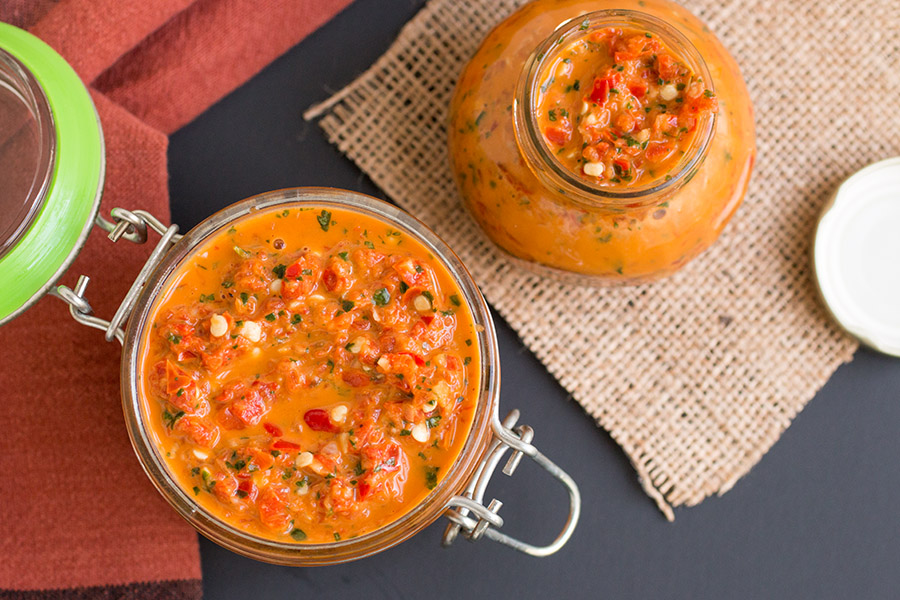Embark on a culinary adventure as we delve into the tantalizing world of peri peri sauce, a vibrant condiment that has captivated taste buds across continents. From its humble origins in Southern Africa to its global acclaim, peri peri sauce has become a culinary staple, adding a burst of flavor to an array of dishes.
In this comprehensive guide, we will unveil the secrets of crafting the perfect peri peri sauce, exploring its versatile ingredients, preparation methods, and culinary applications. Whether you’re a seasoned chef or a home cook seeking to expand your culinary repertoire, this guide will equip you with the knowledge and inspiration to create your own unforgettable peri peri creations.
Peri Peri Sauce Ingredients

Peri peri sauce, originating from Southern Africa, is known for its fiery and flavorful profile. It forms an integral part of Portuguese and Mozambican cuisine, adding a spicy kick to various dishes. Here’s a comprehensive list of ingredients commonly used in making peri peri sauce:
- African Bird’s Eye Chili Peppers: The star ingredient of peri peri sauce, these small but potent chilies bring a significant amount of heat and a distinct fruity flavor.
- Red Bell Peppers: They add a touch of sweetness and smokiness to the sauce, balancing the heat of the chilies.
- Garlic: Fresh garlic imparts a savory and aromatic depth to the sauce.
- Lemon Juice: The acidity of lemon juice cuts through the richness of the sauce, adding a refreshing brightness.
- Olive Oil: It serves as a base for the sauce, providing a rich and flavorful foundation.
- Salt and Black Pepper: These basic seasonings enhance the overall flavor profile of the sauce.
Variations and Substitutions
While the above ingredients form the core of peri peri sauce, there are variations and substitutions that can be made to suit personal preferences:
- Vinegar: White wine vinegar or red wine vinegar can be used instead of lemon juice for a tangier flavor.
- Other Chilies: If African Bird’s Eye chilies are unavailable, you can use a combination of cayenne pepper, habanero, or scotch bonnet peppers to achieve the desired heat level.
- Onion: Yellow or white onion can be added for extra sweetness and depth of flavor.
- Fresh Herbs: Chopped cilantro or parsley can be added for a vibrant freshness.
Peri Peri Sauce Preparation Methods
Preparing peri peri sauce from scratch allows for customization of heat level and flavor profile. Several methods can be employed, each yielding distinct results. Understanding these techniques empowers you to create the perfect peri peri sauce tailored to your preferences.
Blending
Blending is a quick and convenient method for creating a smooth and flavorful peri peri sauce. Simply combine all ingredients in a blender or food processor and blend until desired consistency is achieved. This method is particularly suitable for sauces intended for marinating or dipping.
Simmering
Simmering involves gently heating the sauce over low heat for an extended period. This allows the flavors to meld and develop, resulting in a richer and more complex sauce. Start by sautéing the aromatics (such as onions and garlic) in a pan.
Add the remaining ingredients and simmer for 30-45 minutes, or until the sauce has thickened to your liking.
Roasting
Roasting imparts a smoky and slightly charred flavor to the sauce. Preheat your oven to 400°F (200°C). Toss the peppers and other vegetables with olive oil and roast until tender and slightly caramelized. Remove from the oven and blend or puree until smooth.
This method is ideal for sauces intended for grilling or roasting meats.
Tips for Achieving Desired Consistency and Flavor
- For a thicker sauce, simmer for a longer period or add a cornstarch slurry (equal parts cornstarch and water).
- For a thinner sauce, add more liquid (such as water or vinegar) or blend in a little olive oil.
- Adjust the heat level by adding more or less chili peppers. Remember that the sauce will become hotter as it sits.
- Experiment with different ingredients to create unique flavor profiles. For example, add a touch of honey for sweetness or a squeeze of lemon juice for brightness.
Peri Peri Sauce Variations

Peri peri sauce is a versatile condiment that can be customized to suit your taste preferences. Experiment with different peppers, herbs, and spices to create unique flavor profiles. Here are some popular variations:
Green Peri Peri Sauce
This variation uses green chili peppers instead of red, resulting in a vibrant green color and a milder heat level. Add fresh cilantro, lime juice, and a touch of cumin for a refreshing and herbaceous flavor.
Lemon Peri Peri Sauce
Incorporate the bright and tangy flavors of lemon into your peri peri sauce. Add lemon zest, lemon juice, and a bit of honey to balance the heat. This variation pairs well with seafood and poultry dishes.
Peri Peri Sauce Applications
Peri peri sauce is a versatile condiment that can be used to enhance a wide range of culinary creations. Its unique blend of heat, tang, and savoriness makes it an excellent choice for marinating, grilling, roasting, and even as a dipping sauce.
Grilled Meats
Peri peri sauce is a perfect companion to grilled meats. The sauce’s spicy and tangy flavors penetrate deep into the meat, resulting in a flavorful and juicy dish. Whether you’re grilling chicken, steak, pork, or lamb, a peri peri marinade will elevate your grilling experience.
Seafood
Peri peri sauce can also be used to add a burst of flavor to seafood. Try brushing it on grilled fish or shrimp for a tantalizing combination of heat and freshness. The sauce’s acidity helps to balance the richness of the seafood, creating a harmonious taste experience.
Vegetables
Peri peri sauce is not just for meat and seafood. It can also be used to add a spicy kick to roasted or grilled vegetables. Try tossing your favorite vegetables, such as bell peppers, onions, or zucchini, in peri peri sauce before roasting them for a flavorful side dish.
Salads
Peri peri sauce can even be used to create a spicy and flavorful salad dressing. Simply whisk together peri peri sauce, olive oil, and lemon juice to create a tangy vinaigrette that will add a kick to your favorite greens.
Creative Ideas
In addition to these traditional uses, there are endless creative ways to incorporate peri peri sauce into your dishes. Here are a few ideas to get you started:
- Use peri peri sauce as a dipping sauce for fried appetizers, such as onion rings or chicken nuggets.
- Add peri peri sauce to your favorite pizza or pasta dishes for an extra layer of heat and flavor.
- Create a spicy and flavorful marinade for tofu or tempeh using peri peri sauce as the base.
- Use peri peri sauce to add a kick to your favorite soups or stews.
With its versatility and bold flavor, peri peri sauce is a must-have condiment for any home cook. Experiment with different applications to discover new and exciting ways to enjoy this flavorful sauce.
Peri Peri Sauce Storage and Shelf Life
Peri peri sauce, like many condiments, has a finite shelf life and should be stored properly to maintain its freshness and flavor. Several factors can affect the longevity of the sauce, including temperature and exposure to light.
Refrigeration
The refrigerator is the ideal storage environment for peri peri sauce. The cool, dark conditions help to preserve the sauce’s flavor and prevent spoilage. Once opened, the sauce should be refrigerated in an airtight container and consumed within 2-3 weeks.
Freezing
Peri peri sauce can also be frozen for longer storage. To freeze the sauce, place it in an airtight container or freezer-safe bag and freeze for up to 3 months. When ready to use, thaw the sauce in the refrigerator overnight.
Tips for Extending Shelf Life
- Use clean utensils when handling the sauce to prevent contamination.
- Avoid exposing the sauce to air or light for extended periods.
- Store the sauce in a dark, cool place.
- Discard any sauce that has developed an off-odor or taste.
Final Summary
As we conclude our exploration of peri peri sauce, let us remember that its true magic lies in its ability to transform ordinary dishes into extraordinary culinary experiences. Whether you prefer the fiery kick of the traditional recipe or the milder variations, peri peri sauce has the power to ignite your taste buds and leave a lasting impression on your palate.
So, gather your ingredients, embrace the spirit of experimentation, and embark on a culinary journey that will forever change your perception of flavor.
Q&A
What is the origin of peri peri sauce?
Peri peri sauce traces its roots to Southern Africa, where it has been a culinary staple for centuries. The name “peri peri” is derived from the Swahili word for “pepper,” reflecting the central role of chili peppers in the sauce’s flavor profile.
What is the traditional method of preparing peri peri sauce?
Traditionally, peri peri sauce is made by pounding fresh chili peppers with garlic, lemon juice, and other spices. This method allows for the full release of the peppers’ flavors and creates a vibrant, textured sauce.
Can I make peri peri sauce without fresh chili peppers?
Yes, you can use dried chili peppers as a substitute for fresh peppers. However, keep in mind that dried peppers have a more concentrated flavor, so adjust the amount you use accordingly.
How long does homemade peri peri sauce last?
Homemade peri peri sauce can be stored in an airtight container in the refrigerator for up to 2 weeks. For longer storage, you can freeze the sauce for up to 3 months.
